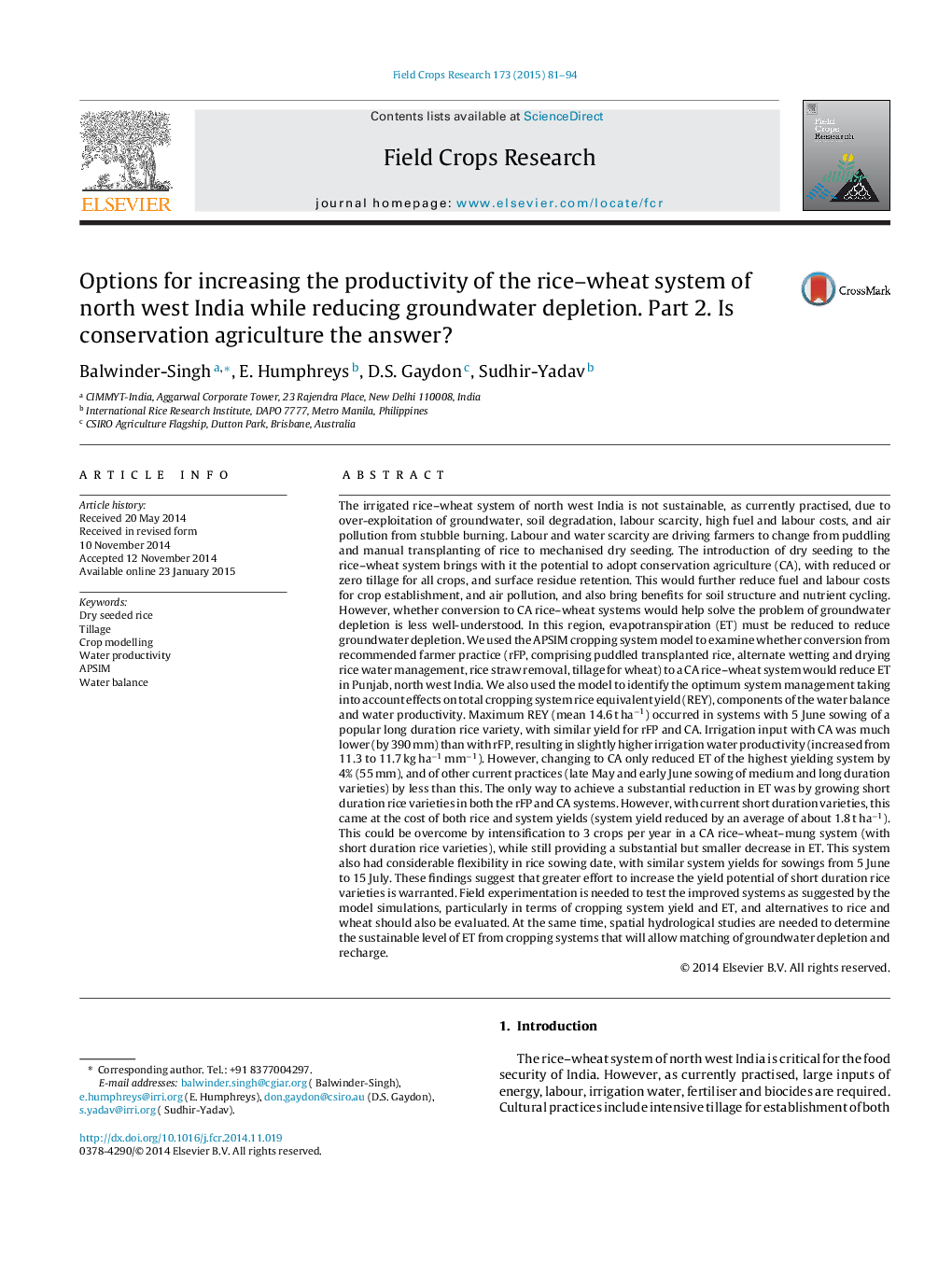| Article ID | Journal | Published Year | Pages | File Type |
|---|---|---|---|---|
| 4509938 | Field Crops Research | 2015 | 14 Pages |
•Changing from current practice to CA reduces irrigation input while maintaining yield.•Changing to CA reduced mean ET by 0–4% (0–55 mm) compared with current practice.•But changing to CA will not solve the problem of groundwater depletion.•System yield increased with short duration rice–wheat–mung.•While reducing system ET and thus groundwater depletion.
The irrigated rice–wheat system of north west India is not sustainable, as currently practised, due to over-exploitation of groundwater, soil degradation, labour scarcity, high fuel and labour costs, and air pollution from stubble burning. Labour and water scarcity are driving farmers to change from puddling and manual transplanting of rice to mechanised dry seeding. The introduction of dry seeding to the rice–wheat system brings with it the potential to adopt conservation agriculture (CA), with reduced or zero tillage for all crops, and surface residue retention. This would further reduce fuel and labour costs for crop establishment, and air pollution, and also bring benefits for soil structure and nutrient cycling. However, whether conversion to CA rice–wheat systems would help solve the problem of groundwater depletion is less well-understood. In this region, evapotranspiration (ET) must be reduced to reduce groundwater depletion. We used the APSIM cropping system model to examine whether conversion from recommended farmer practice (rFP, comprising puddled transplanted rice, alternate wetting and drying rice water management, rice straw removal, tillage for wheat) to a CA rice–wheat system would reduce ET in Punjab, north west India. We also used the model to identify the optimum system management taking into account effects on total cropping system rice equivalent yield (REY), components of the water balance and water productivity. Maximum REY (mean 14.6 t ha−1) occurred in systems with 5 June sowing of a popular long duration rice variety, with similar yield for rFP and CA. Irrigation input with CA was much lower (by 390 mm) than with rFP, resulting in slightly higher irrigation water productivity (increased from 11.3 to 11.7 kg ha−1 mm−1). However, changing to CA only reduced ET of the highest yielding system by 4% (55 mm), and of other current practices (late May and early June sowing of medium and long duration varieties) by less than this. The only way to achieve a substantial reduction in ET was by growing short duration rice varieties in both the rFP and CA systems. However, with current short duration varieties, this came at the cost of both rice and system yields (system yield reduced by an average of about 1.8 t ha−1). This could be overcome by intensification to 3 crops per year in a CA rice–wheat–mung system (with short duration rice varieties), while still providing a substantial but smaller decrease in ET. This system also had considerable flexibility in rice sowing date, with similar system yields for sowings from 5 June to 15 July. These findings suggest that greater effort to increase the yield potential of short duration rice varieties is warranted. Field experimentation is needed to test the improved systems as suggested by the model simulations, particularly in terms of cropping system yield and ET, and alternatives to rice and wheat should also be evaluated. At the same time, spatial hydrological studies are needed to determine the sustainable level of ET from cropping systems that will allow matching of groundwater depletion and recharge.
